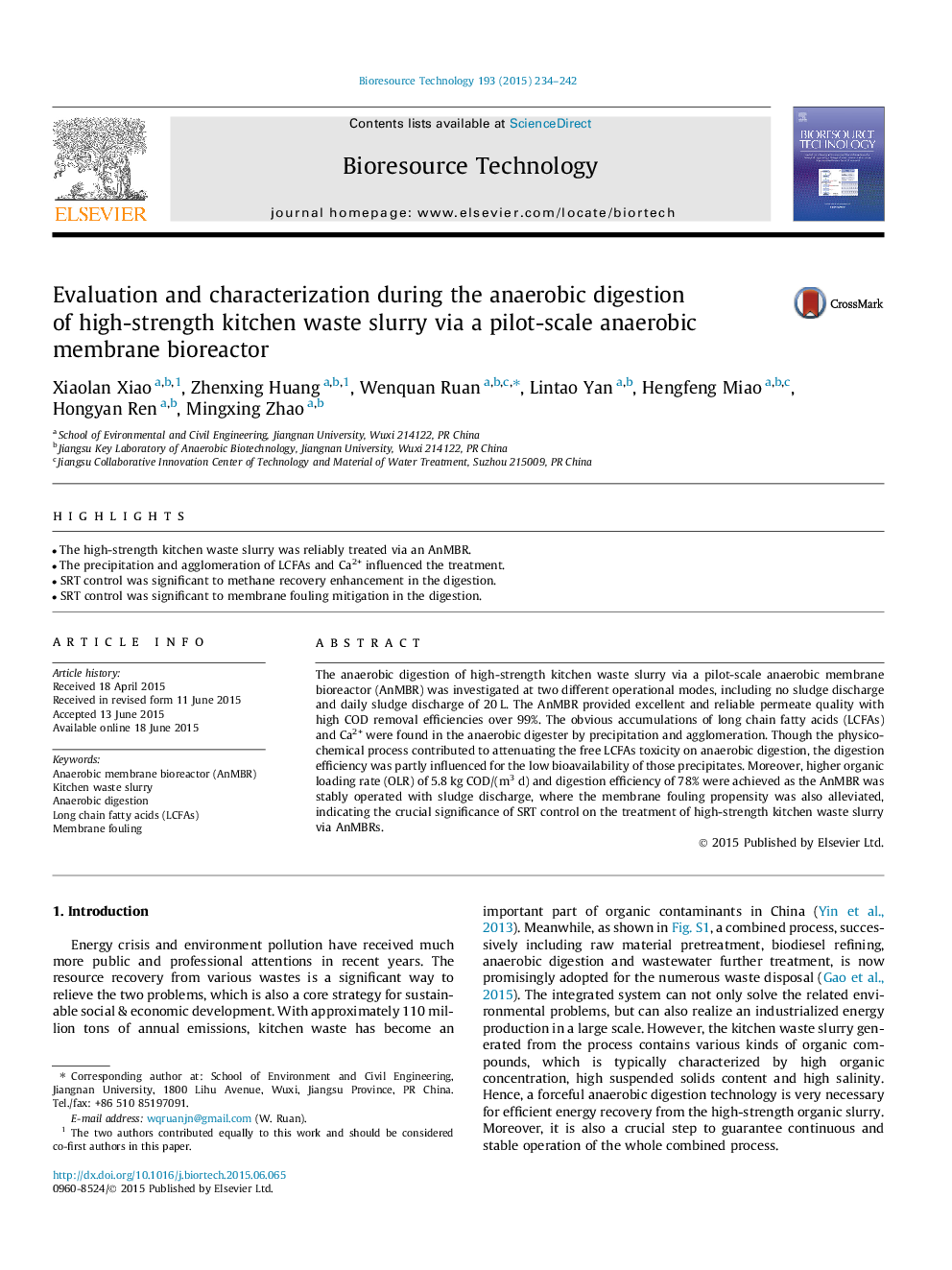| Article ID | Journal | Published Year | Pages | File Type |
|---|---|---|---|---|
| 7073991 | Bioresource Technology | 2015 | 9 Pages |
Abstract
The anaerobic digestion of high-strength kitchen waste slurry via a pilot-scale anaerobic membrane bioreactor (AnMBR) was investigated at two different operational modes, including no sludge discharge and daily sludge discharge of 20Â L. The AnMBR provided excellent and reliable permeate quality with high COD removal efficiencies over 99%. The obvious accumulations of long chain fatty acids (LCFAs) and Ca2+ were found in the anaerobic digester by precipitation and agglomeration. Though the physicochemical process contributed to attenuating the free LCFAs toxicity on anaerobic digestion, the digestion efficiency was partly influenced for the low bioavailability of those precipitates. Moreover, higher organic loading rate (OLR) of 5.8Â kg COD/(m3Â d) and digestion efficiency of 78% were achieved as the AnMBR was stably operated with sludge discharge, where the membrane fouling propensity was also alleviated, indicating the crucial significance of SRT control on the treatment of high-strength kitchen waste slurry via AnMBRs.
Related Topics
Physical Sciences and Engineering
Chemical Engineering
Process Chemistry and Technology
Authors
Xiaolan Xiao, Zhenxing Huang, Wenquan Ruan, Lintao Yan, Hengfeng Miao, Hongyan Ren, Mingxing Zhao,
